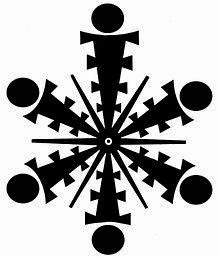Anyhow, a few of you wanted to hear about Bridget’s eye exercises. They reminded me of my mother, actually, as Mum
used to try all these natural methods for improving eyesight. She’d walk around wearing pin-hole glasses
(she bought me a pair too but they just gave me headaches) and she spent hours
staring at a Tibetan eye chart (she bought me one of those too but I admit I
got bored and stopped staring.)
And then I got to thinking about how my brother used to stare at the sun
every day, at sunrise, because he said it would improve his eyesight. My family, eh?
Meanwhile, back to Bridget. ‘It’s a
real pity that we wear glasses or contact lenses,’ she said. ‘Putting glass in front of your eyes disturbs
the light rays coming into your eyes. We
are all depleting ourselves of sunlight and yet the whole body is affected by
the amount of you light you get into the body – both through the skin and
through the eyes. We need to use our
eyes more intelligently.’
She went on to talk about how, when we develop our sight, we open
ourselves to another level of creation. ‘We
talk about God being light, so by bathing in sunlight we are sitting in God. We
can create consciousness through light.’
She also talked about how, in Russia, they are experimenting with
getting certain sensitive people to develop the ability to see with their eyes
shut. Intriguing, huh?
But that’s probably beyond what will interest most of you? So let’s cut to the chase. These are the things she reckons will help
you see without glasses.
Eyes deteriorate because our bloodstream is toxic so you probably need
to cleanse your body. Dump the coffee
and alcohol and meat and heavy dairy.
Sunrise and sunset are healers to the eyes: look at the sunrise for a few seconds to
begin with, and add a few seconds each day (yup, just like my brother). Obviously you don’t do this with the full
sun.
Splash your eyes with water during the day.
Don't wear sunglasses.
Shift your perspective. Look at
your thumb – focus on the thumb print.
Then switch your gaze to somewhere in the middle distance and then the
far distance. Move between the two (this
was one of my Mum’s exercises too). If
you’re outside, you can do this by looking at the veins on a leaf, the petal on
a flower – and then switch to a distant vista.
Next up, eye rotations (another one of Mum’s) – imagine you are following a clock so start at…well,
wherever you like really – for some reason I always start at quarter to…and
then go round. Then after a few cycles
turn back time by going the other way.
Palming. Anyone who’s done a yoga
class will be familiar with this. You
rub the palms of your hands together really fast until you build up warmth
through friction. Then place them over
your eyes and open your eyes.
Last up…one my mother didn’t do.
Get a bowl of cold water that’s deep enough to dunk your whole
face. Breathe in and down you go, with
eyes open. Now, staying under the water,
use the yoga lock, uddiyana bandha, contracting and releasing your abdominal
muscles for as long as you can. Bridget
does it 100 times. You might manage three! If you
don’t know how to do uddiyana bandha this link gives pretty good
instructions. I wrote about it somewhere
else on the blog but can’t for the life of me find it.
Why does this work? Does it work? I have
absolutely no idea. But I guess it’s
worth a try. If nothing else, uddiyana
bandha is a great exercise (and supposedly trims the abdominal area, so even if
you don’t get to chuck out your glasses, you could get a flatter tum).




2 comments:
Gosh Jane, I am sorry to hear of your recent auto accident, and do hope that your recovery process is proceding steadily. Watch out for the weight lifting for a while?
The eye exercises sound interesting. I'd heard of some of them before, but some were totally new to me.
Thank you for expanding my knowledge. xo
Thanks for sharing, in your humorous way.
Horatius Bates, a good reminder of these useful exercises. It tends to come down to dynamic relaxation - which reduces excessive tension and tunes into our natural bioryhthms, and with it eases all manner of symptoms.
Post a Comment